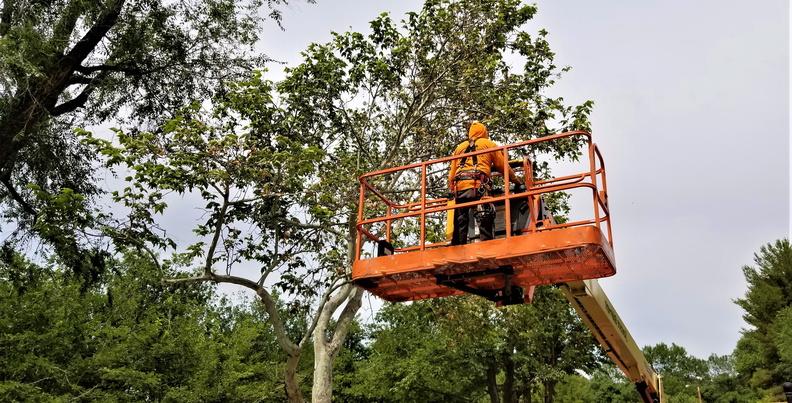Tree trimming, an essential aspect of arboriculture, encompasses the selective removal of certain parts of a tree, such as branches, buds, or roots. Reasons for engaging in tree trimming include enhancing plant health, reducing the risk of falling branches, and improving the aesthetic appeal of trees. This detailed examination delves into the various aspects of tree trimming, covering its importance, techniques, timing, and safety measures.
Importance of Tree Trimming
Tree trimming serves multiple purposes, each contributing to the tree's overall health and the safety of its surroundings. One primary benefit is the improvement of tree health. By removing diseased, damaged, or dead branches, trees are less likely to succumb to pests and diseases. This practice also allows for better air circulation and sunlight penetration, essential factors for the robust growth of trees.
Safety is another significant concern addressed by tree trimming. Overgrown branches can pose risks to human safety, property, and utility lines. Regular trimming helps prevent potential hazards, such as branches falling during severe weather conditions, thus protecting property and human lives.
Additionally, aesthetic appeal is a notable reason for tree trimming. Well-maintained trees contribute to the overall beauty of landscapes, increasing property values and enhancing community spaces. Strategic trimming can shape trees into desirable forms, contributing to the visual appeal of residential and commercial properties.
Techniques in Tree Trimming
Several techniques are employed in tree trimming, each suited to specific objectives:
Thinning: This method involves removing select branches to improve structure and increase light penetration and air movement through the crown. Thinning reduces the weight of heavy limbs and helps maintain the tree's natural shape.
Raising: By removing lower branches, raising provides clearance for buildings, vehicles, pedestrians, and vistas.
Reduction: Reducing the size of a tree, often for utility line clearance, involves trimming back the tree's height and spread. This technique aims to minimize stress on the tree by making smaller cuts.
Cleaning: The removal of dead, dying, diseased, crowded, weakly attached, and low-vigor branches from the crown of the tree enhances its health and appearance.
Timing of Tree Trimming
The best time for tree trimming varies with the tree species and the purpose of the trim. Generally, late winter or early spring, when trees are dormant, is ideal. This timing minimizes sap loss and subsequent stress on the tree. It also reduces the risk of pest problems associated with wound openings. However, trees that bloom in spring should be trimmed immediately after their flowering period to avoid cutting off future blooms. In contrast, dead or diseased branches should be removed as soon as they are noticed, regardless of the season, to prevent the spread of disease and pests.
Safety Measures in Tree Trimming
Tree trimming can be hazardous, requiring appropriate safety measures to protect the individual performing the work and the surrounding property. Personal protective equipment (PPE), such as helmets, gloves, eye protection, and sturdy boots, is essential. When working near power lines, it's critical to maintain a safe distance or contact utility companies for assistance. The use of proper tools, like chainsaws, pruners, and ladders, and knowledge of their safe operation, is vital. For larger projects, hiring professionals with experience and the right equipment is often the safest and most efficient approach.
Hiring Professional Tree Trimming Services
While some tree trimming can be done by individuals, professional services are recommended for large-scale or complex tasks. Certified arborists and professional tree service companies have the expertise, equipment, and insurance to safely and effectively manage tree-trimming projects. They can assess the health of trees, identify any potential issues, and recommend the best course of action. Hiring professionals can prevent injuries, and property damage, and ensure the health and longevity of trees.
Tree trimming is a critical component of tree care, offering numerous benefits ranging from enhanced tree health and safety to improved aesthetic appeal. Understanding the various techniques and the optimal timing for trimming is crucial for achieving the desired outcomes. Given the potential risks associated with tree trimming, adhering to safety protocols cannot be overstated. For extensive trimming projects, enlisting the services of professionals is advisable to ensure the work is done safely and effectively. Ultimately, regular and proper tree trimming contributes to the health of trees and the beauty and safety of our environments.
